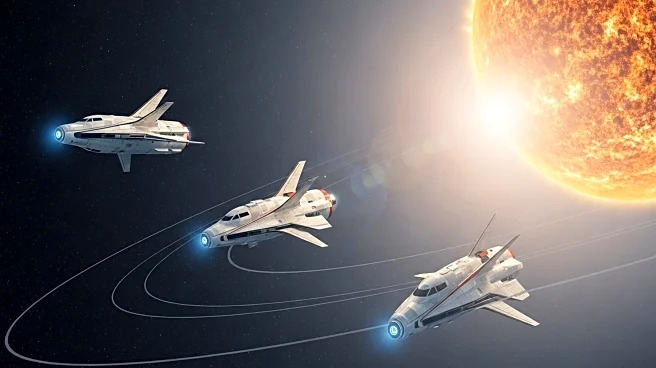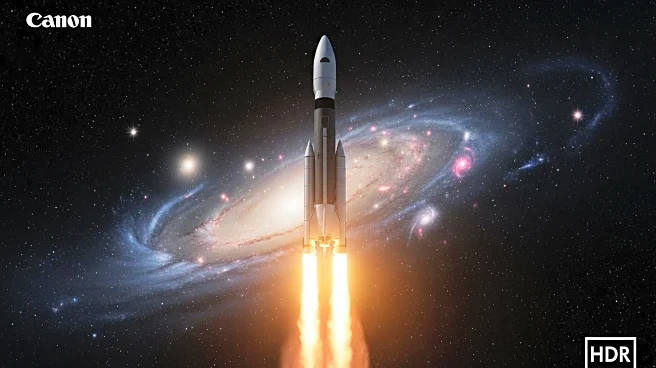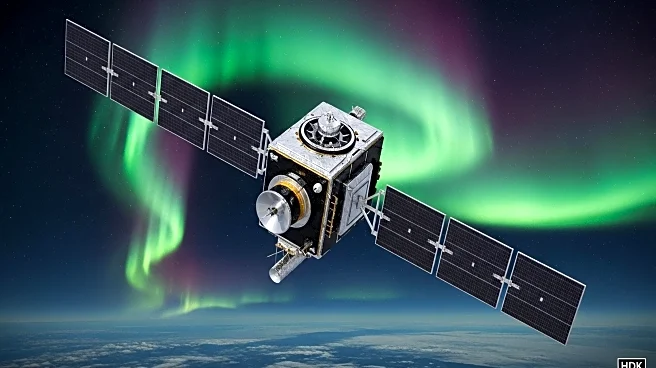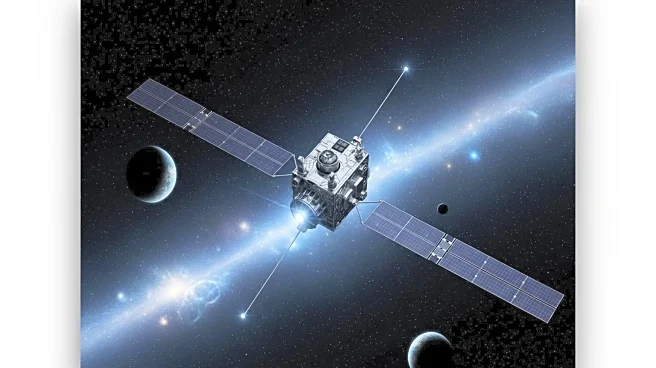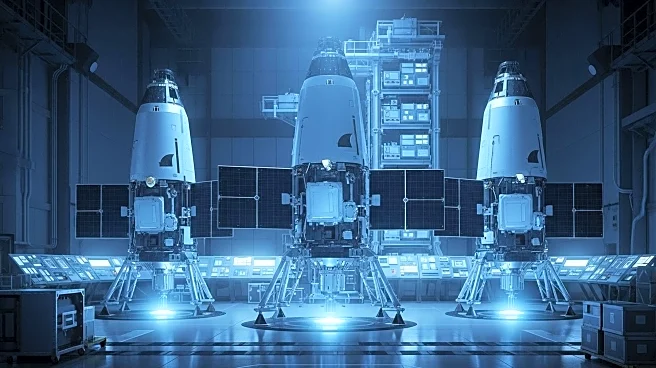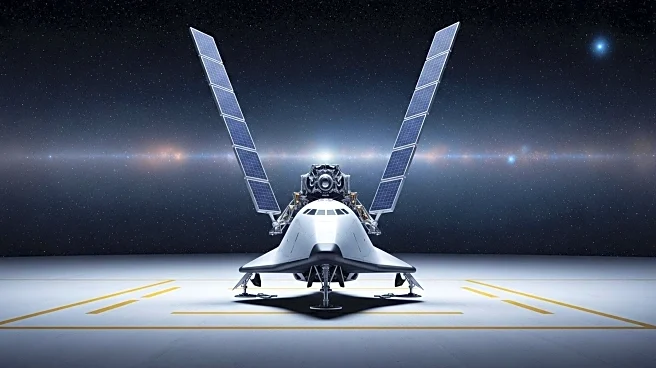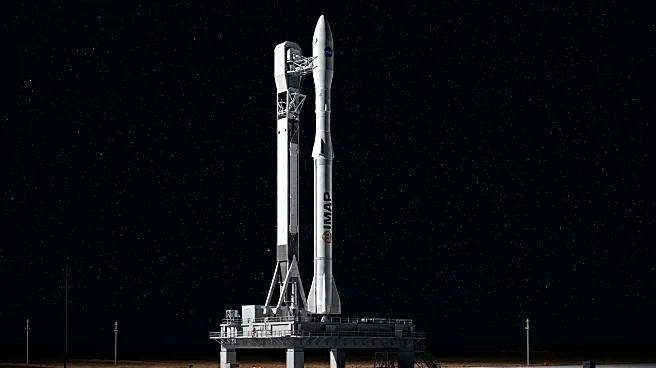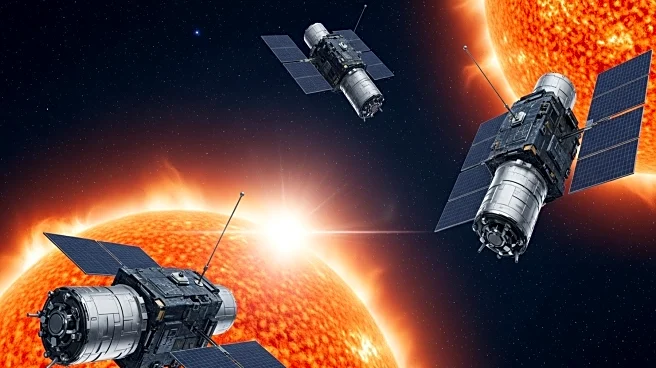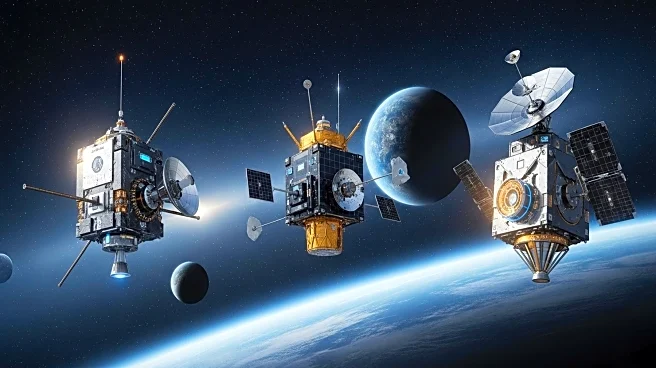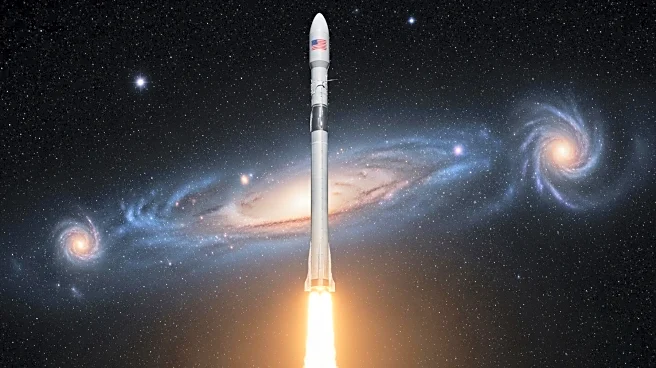What's Happening?
NASA and NOAA have launched three spacecraft on a SpaceX Falcon 9 rocket from Kennedy Space Center, Florida. The missions include NASA's IMAP, Carruthers Geocorona Observatory, and NOAA's SWFO-L1 satellite. These spacecraft are designed to study the solar wind and its effects on Earth's atmosphere and interstellar space. The launch aims to improve space weather forecasting and protect infrastructure from solar storms.
Why It's Important?
Understanding space weather is vital for protecting satellites, power grids, and communication systems from solar storms. The data from these missions will provide early warnings and help mitigate the impacts of space weather on technology and human activities. This is particularly important as the United States prepares for future missions to the Moon and Mars, ensuring the safety of astronauts and space-based infrastructure.
What's Next?
The spacecraft will travel to the L1 Lagrange point, where they will begin their observations. The data collected will be used to improve space weather forecasts and develop strategies to protect technology and human activities from solar storms. The missions are expected to provide valuable information that will contribute to the safety and resilience of global infrastructure.
Beyond the Headlines
These missions highlight the collaboration between NASA and NOAA in addressing space weather challenges. The successful launch demonstrates the effectiveness of using shared resources to maximize scientific output and cost efficiency. The data collected will not only benefit the United States but also contribute to global efforts in understanding and mitigating space weather impacts.

